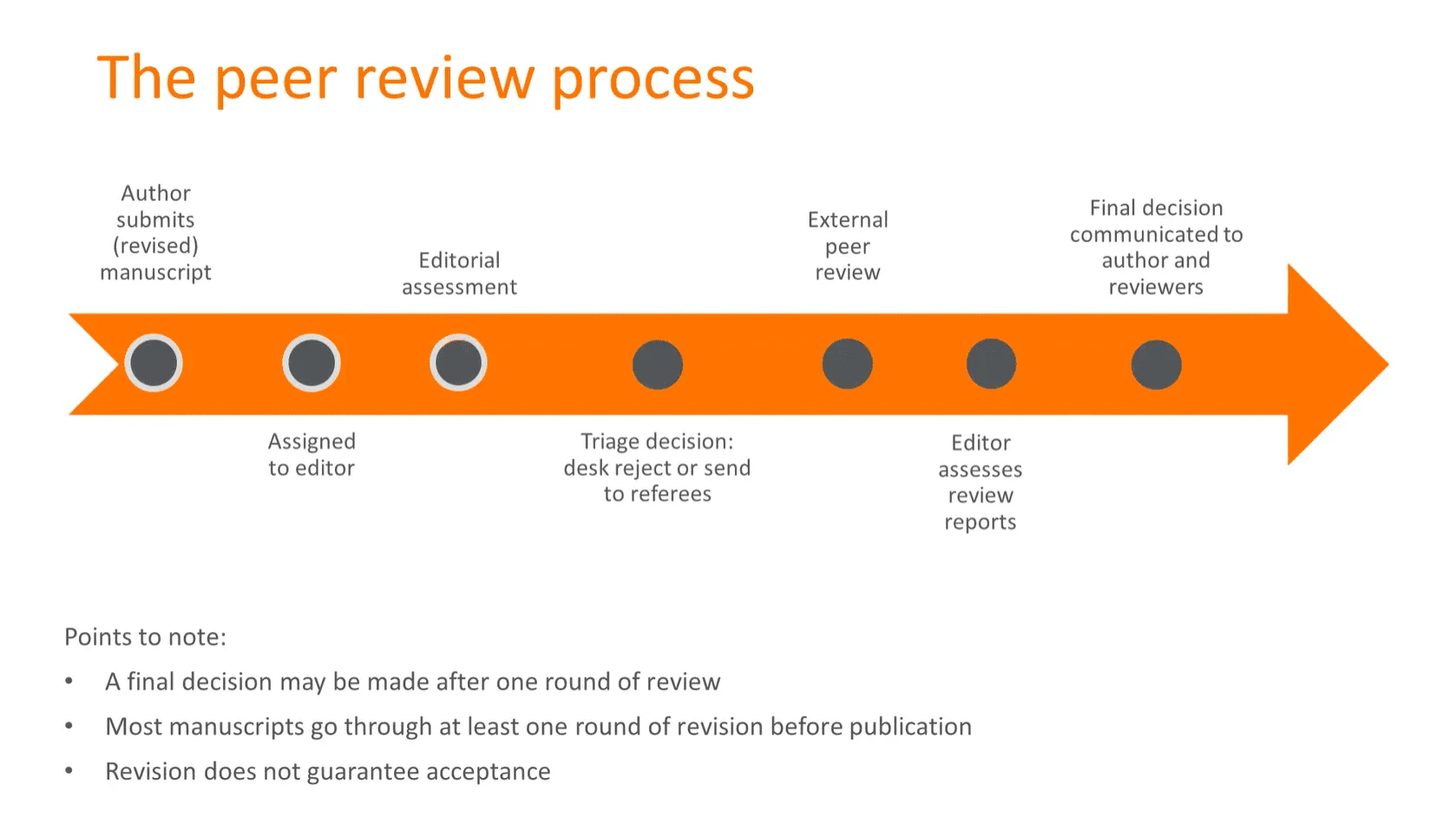What is peer review?
Background
Reviewers play a pivotal role in scholarly publishing. The peer review system exists to validate academic work, helps to improve the quality of published research, and increases networking possibilities within research communities. Despite some limitations, peer review is still the only widely accepted method for research validation.
Elsevier relies on the peer review process to uphold the quality and validity of individual articles and the journals that publish them.
Peer review has been a formal part of scientific communication since the first scientific journals appeared more than 300 years ago. The Philosophical Transactions of the Royal Society is thought to be the first journal to formalize the peer review process under the editorship of Henry Oldenburg (1618- 1677).
Although peer review has some limitations, the majority of the research community still believes peer review is the best form of scientific evaluation. This opinion was endorsed by a 2015 survey by the Publishing Research Consortium in which 82% of researchers agreed that “without peer review there is no control in scientific communication.”
To learn more about peer review, visit Elsevier’s free e-learning platform Researcher Academy and see our resources below.
The peer review process

Watch now
|
The peer review process
Types of peer review
Peer review comes in different flavours. Each model has its own advantages and disadvantages, and often one type of review will be preferred by a subject community. Before submitting or reviewing a paper, you must therefore check which type is employed by the journal so you are aware of the respective rules. In case of questions regarding the peer review model employed by the journal for which you have been invited to review, consult the journal’s homepage or contact the editorial office directly.
Single anonymized review
In this type of review, the names of the reviewers are hidden from the author. This is the traditional method of reviewing and is the most common type by far. Points to consider regarding single anonymized review include:
Reviewer anonymity allows for impartial decisions, as the reviewers will not be influenced by potential criticism from the authors.
Authors may be concerned that reviewers in their field could delay publication, giving the reviewers a chance to publish first.
Reviewers may use their anonymity as justification for being unnecessarily critical or harsh when commenting on the authors’ work.
Double anonymized review
Both the reviewer and the author are anonymous in this model. Some advantages of this model are listed below.
Author anonymity limits reviewer bias, such as on author's gender, country of origin, academic status, or previous publication history.
Articles written by prestigious or renowned authors are considered based on the content of their papers, rather than their reputation.
But bear in mind that despite the above, reviewers can often identify the author through their writing style, subject matter, or self-citation – it is exceedingly difficult to guarantee total author anonymity. More information for authors can be found in our double-anonymized peer review guidelines.
Triple anonymized review
With triple anonymized review, the reviewers’ identity is not made visible to the author; likewise, the author identity is not made visible to the reviewer, and neither the reviewer nor author identity is made visible to the decision-making editor (which is not the same as the handling editor). The handling editor, responsible for choosing and inviting reviewers, does have visibility of the author and the reviewer identities. However, it should be noted that:
The complexities involved with anonymizing articles/authors to this level are considerable.
As with double anonymized review, there is still a possibility for the editor and/or reviewers to correctly identify the author(s) from their writing style, subject matter, citation patterns, or other methodologies.
Open review
Open peer review is an umbrella term for many different models aiming at greater transparency during and after the peer review process. The most common definition of open review is when both the reviewer and author are known to each other during the peer review process. Other types of open peer review consist of:
Publication of reviewers’ names on the article page
Publication of peer review reports alongside the article, either signed or anonymous
Publication of peer review reports (signed or anonymous) with authors’ and editors’ responses alongside the article
Publication of the paper after pre-checks and opening a discussion forum to the community who can then comment (named or anonymous) on the article
Many believe this is the best way to prevent malicious comments, stop plagiarism, prevent reviewers from following their own agenda, and encourage open, honest reviewing. Others see open review as a less honest process, in which politeness or fear of retribution may cause a reviewer to withhold or tone down criticism. For three years, five Elsevier journals experimented with publication of peer review reports (signed or anonymous) as articles alongside the accepted paper on ScienceDirect (example).
Read more about the experiment
More transparent peer review
Transparency is the key to trust in peer review and as such there is an increasing call towards more transparency around the peer review process. In an effort to promote transparency in the peer review process, many Elsevier journals therefore publish the name of the handling editor of the published paper on ScienceDirect. Some journals also provide details about the number of reviewers who reviewed the article before acceptance. Furthermore, in order to provide updates and feedback to reviewers, most Elsevier journals inform reviewers about the editor’s decision and their peers’ recommendations.
Article transfer service: sharing reviewer comments
Elsevier authors may be invited to transfer their article submission from one journal to another for free if their initial submission was not successful.
As a referee, your review report (including all comments to the author and editor) will be transferred to the destination journal, along with the manuscript. The main benefit is that reviewers are not asked to review the same manuscript several times for different journals.